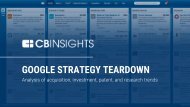mit_impact_full_report
mit_impact_full_report
mit_impact_full_report
You also want an ePaper? Increase the reach of your titles
YUMPU automatically turns print PDFs into web optimized ePapers that Google loves.
epresented in the survey responses are somewhat<br />
more recent and average fewer employees than<br />
the universe of MIT alumni-founded companies.<br />
All told, these 4,611 specific surveyed firms included<br />
in the direct responses employ more than 585,000<br />
people. We estimate, however, that the entire<br />
population of MIT alumni firms employs more than<br />
3.3 million people.<br />
The <strong>report</strong>’s findings on where and why<br />
companies locate where they do, what gives them<br />
their competitive edge, how they received initial<br />
funding, where they sell their products, and how many<br />
patents they have, are taken directly from the<br />
responses to this 2003 survey, updated to reflect the<br />
2006 corporate information obtained from Compustat<br />
and Dun & Bradstreet. To estimate accurately the<br />
entrepreneurial activity and economic <strong>impact</strong> of those<br />
in the entire MIT alumni population who did not<br />
respond to the surveys, we multiply the direct response<br />
numbers by a scale factor. For further details, see the<br />
Appendix section, “Estimation Methods,” below.<br />
The detailed questionnaire used for this survey<br />
is available at www.kauffman.org/MITstudy. We<br />
encourage other universities to undertake and share<br />
comparative analyses. We also should note here that,<br />
although we correctly identify all of the alumni in the<br />
MIT database as “MIT alumni,” a substantial fraction<br />
of them are also alumni of other universities in the<br />
United States and other countries. So the economic<br />
<strong>impact</strong>s cited in this <strong>report</strong> reflect the direct and<br />
indirect educational <strong>impact</strong> of many institutions of<br />
higher learning in science, technology, and<br />
management.<br />
Estimation Methods<br />
As in all surveys, a large segment of the alumni<br />
population did not respond to the MIT alumni surveys.<br />
Therefore, estimation of the total <strong>impact</strong> of MIT alumni<br />
entrepreneurs requires extrapolation to account for<br />
non-respondents. To estimate the numbers for the<br />
entire MIT alumni population, we multiply by a scale<br />
factor to give an accurate estimate of the<br />
entrepreneurial activity of those who did not respond<br />
Appendix<br />
to the surveys. Since we have aggregated data from<br />
both the 2001 and 2003 MIT surveys, with<br />
adjustments from the 2006 Compustat and Dun &<br />
Bradstreet databases, the appropriate scale factor<br />
depends on the particular statistic or question being<br />
answered.<br />
1. For survey items where we have data on all<br />
companies created over the life of the<br />
entrepreneur, the base scale factor is<br />
approximately 9.476 (i.e., 2.425 * 3.906 =<br />
~9.476). These numbers are approximate because<br />
we actually use more than three digits after the<br />
decimal. We multiply by 2.425 because, as<br />
indicated above, the total population of MIT<br />
alumni is 105,928 and 43,668 responded to the<br />
first survey. To get from 43,668 to 105,928 we<br />
have to multiply by 2.425 (i.e., 105,928/43,668 =<br />
~2.425). Then we multiply by 3.906 because<br />
8,044 indicated that they were entrepreneurs and<br />
only 2,059 responded to the Founder’s Survey<br />
(i.e., 8,044/2,059 = ~3.906). We multiply that by<br />
0.773 to avoid duplicate counting by correcting<br />
for multiple MIT alumni on the same founding<br />
teams. Because 23.4 percent of the <strong>report</strong>ed<br />
companies were out of business by 2003, we<br />
finally multiply by 0.766 to count just those<br />
companies likely to still be active.<br />
2. For items where we only have data on one of the<br />
companies the entrepreneur founded, we then<br />
multiply by 1.61 because 1.61 is the number of<br />
companies on average each entrepreneur has<br />
founded (27 percent of the entrepreneurial alumni<br />
are repeat/serial entrepreneurs). For example, if we<br />
take 100 alumni entrepreneurs, on average they<br />
would have created 161 companies during their<br />
careers. If we only have data on total employees<br />
for one company each (100 companies), then we<br />
must multiple by 1.61 to get an estimate of the<br />
real total number of employees for all the<br />
companies founded by that entrepreneur.<br />
3. We further adjust the scaling factor for items<br />
where data are missing due to entrepreneurs<br />
skipping a survey item. This process may seem<br />
ENTREPRENEURIAL IMPACT: THE ROLE OF MIT 69



